On a foggy spring afternoon in Calais, French President Mitterrand and Queen Elizabeth II. Elizabeth fastened her seat belts in her royal Rolls-Royce. They arrived in Folkestone in just over half an hour.
“It has been a recurring dream of statesmen and engineers for several centuries to rejoin what nature took apart some 40 million years ago,” the Queen said after launching the first vehicle shuttle to pass through the Channel Tunnel.
It would be another six months before the first Eurostar passenger train departed London Waterloo for Paris (on 14 November), but the opening of the Channel Tunnel on 6 May 1994 was a symbolic moment in British history. This represented the end of British parochialism. It was the embodiment of post-war European peace. Or it was a white elephant doomed to fail, depending on who you ask.
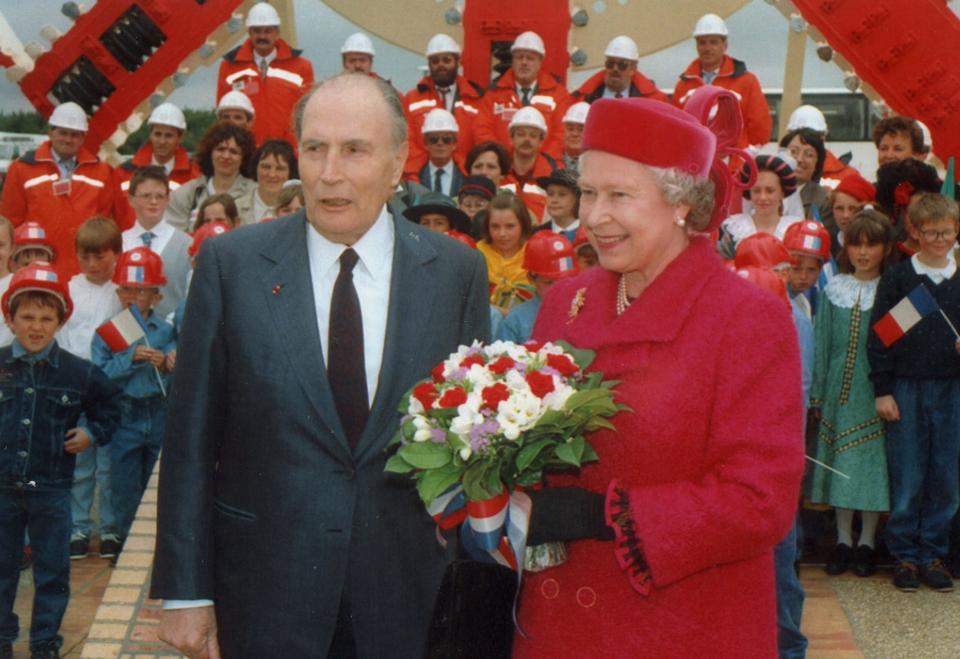
For more than three decades, around 500 million people and more than 100 million vehicles have passed under the English Channel via LeShuttle (formerly Eurotunnel), and more than 200 million Eurostar passengers have transited by train. The tunnel is a popular way to get to Paris or Amsterdam, partly because of speed and convenience, but also because of comfort.
President Mitterrand seemed to agree: on that May afternoon 30 years ago, Queen Elizabeth II. “I had a very comfortable ride in a very comfortable car, and that was your car, ma’am,” she said to Elizabeth. But the Channel Tunnel journey has not always been this smooth, and in 2024 companies operating on these subsea lines will face greater challenges than ever before.
It all started with Napoleon
Plans for the Channel Tunnel were first drawn up by French engineer Albert Mathieu-Favier, who presented the plans to Napoleon Bonaparte in 1802 before they were exhibited in galleries in Paris. The tunnel will be illuminated with oil lamps on horse-drawn carriages carrying passengers between the two countries.
Reactions to the idea were mixed, particularly on the north side of the Channel. Lord Palmerston later rejected this on the grounds that it would “shorten the distance which we already find too short”, and a British army general said it would “open a route to England for the invader” – although Queen Victoria, who was suffering from terrible seasickness, was noted to have supported the idea.
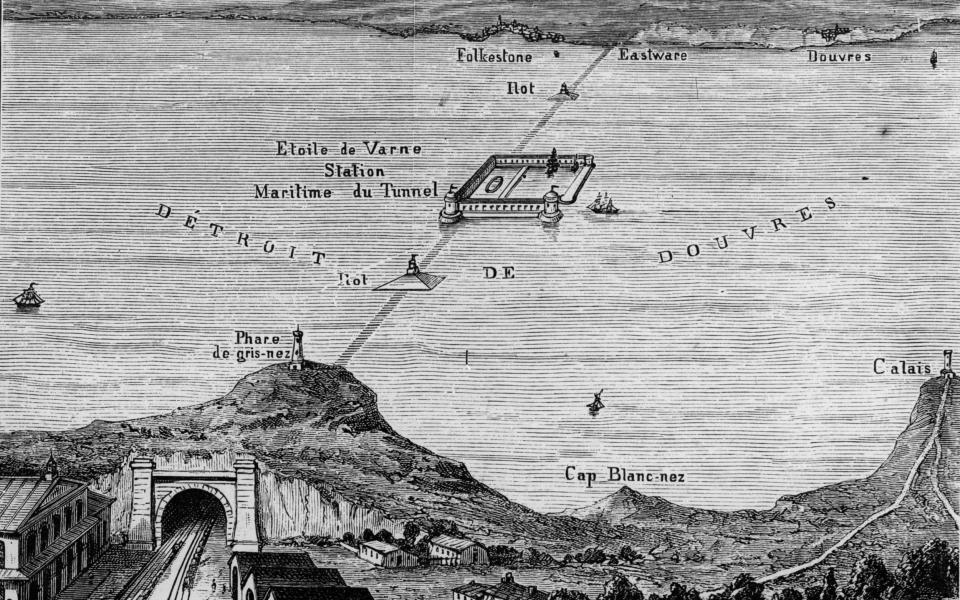

Throughout the 19th century, numerous surveys and geological studies tested the feasibility of the tunnel, and in 1875 an Act of Parliament authorized the Channel Tunnel Company to begin trials, perhaps inspired by the success of the Brunel Thames Tunnel, which opened in 1843. Engineers reached as far as boreholes at Folkestone, but none reached the shores of Calais. Safety concerns remained a major concern at the time, and in 1882 a committee concluded: “There must be some way of closing the tunnel with a portcullis and also of venting into it unbreathable gases.”
In the early 20th century, Winston Churchill was an advocate and wrote an article on the subject. daily mail In a period of great instability in Europe, although the fear of opening the gates to foreign armies continued to prevent serious progress, in 1936 the question “Why Not the Channel Tunnel?” A tunnel with a title was opened.
The idea of a fixed link between Britain and France resurfaced after Margaret Thatcher’s Conservative government came to power in 1979, but her dream of crossing the Channel (through a tunnel or over a bridge) never gained traction. It was the railway connection. Thatcher had no government interest in funding the project, so plans were drawn up with her French counterparts for a trio of privately financed tunnels: one to transport vehicles, one for passenger trains, plus a third service tunnel.
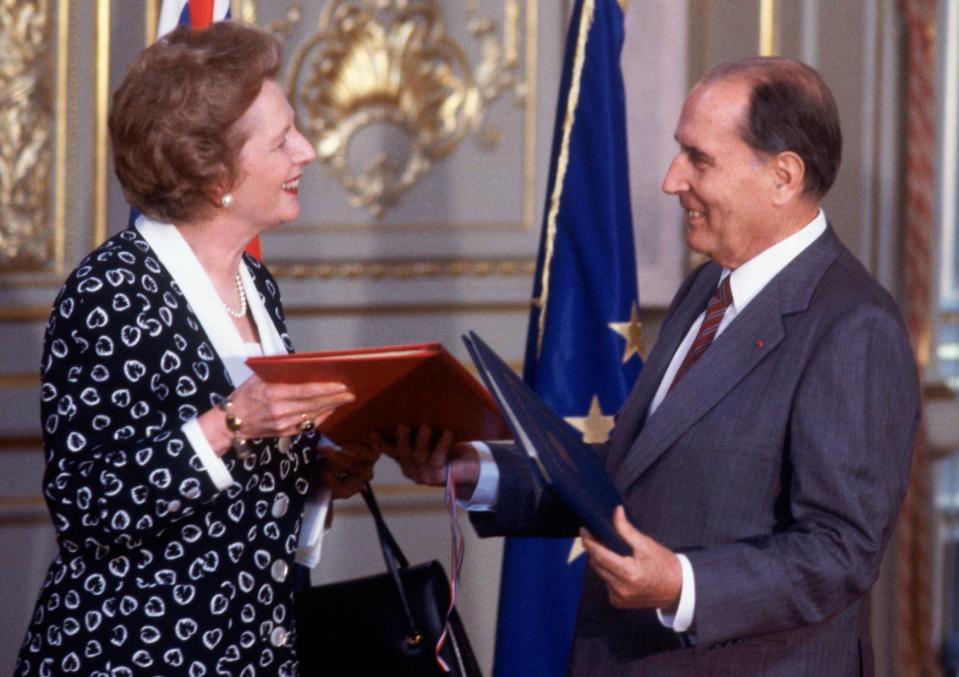

Work began in 1987, and in December 1990 French and British engineers met deep in the seabed, drilling the last few inches of chalk. The historic handshake was recorded on television. Three and a half years later, the Channel Tunnel was opened at a total cost of £4.65 billion. In a sense, Britain ceased to be an island on 6 May 1994.
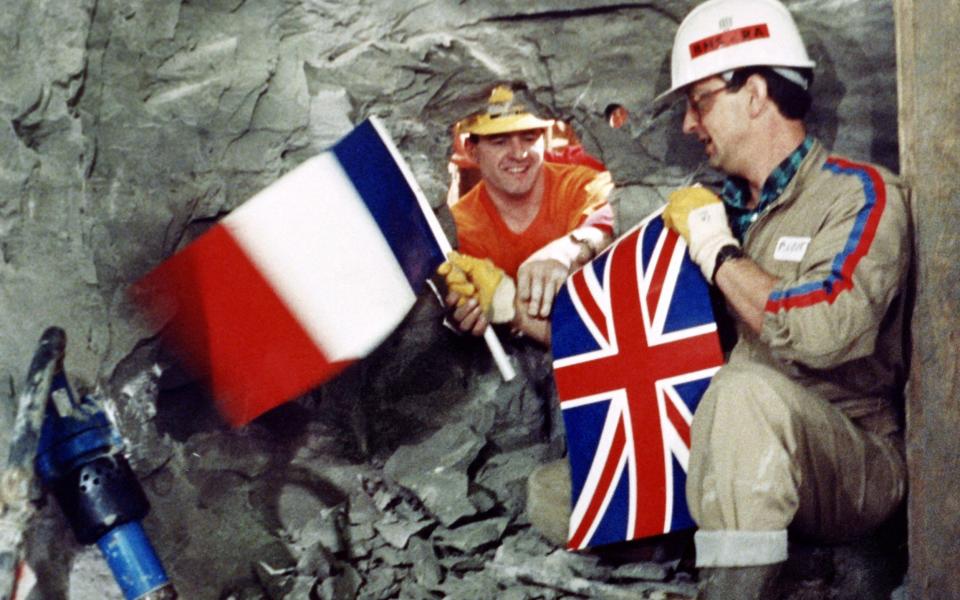

Abandoned destinations and half-empty trains
There was an advertisement published by Eurotunnel in 1987: “Eurotunnel. Look at it this way.” He showed a map reminiscent of the London Underground, with lines connecting Glasgow to Marseille, Cardiff to Calais, and branch lines to dozens of European destinations, including Naples, Lisbon and Copenhagen.
“You’ll be able to hop on a train from Birmingham to Brussels. “Or catch the 8.23 train from Newcastle to Nice (change in Paris),” the poster promised, adding: “For the first time, you’ll find yourself getting from point A to point B without having to worry about C.”
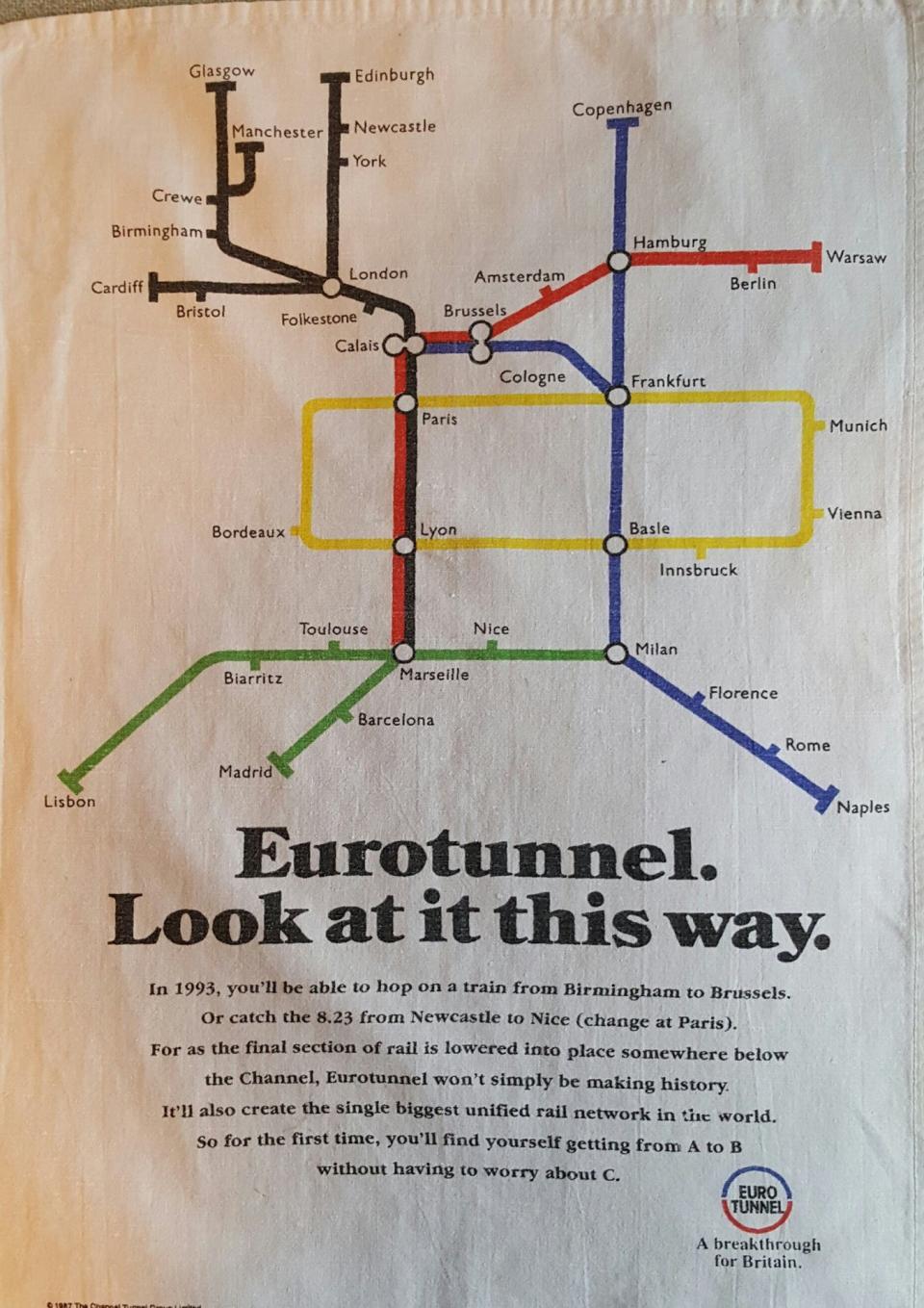

In the early days of the Channel Tunnel, there were high hopes for direct, high-speed rail links beyond London to Paris. Some of these have been implemented. Today, you can travel directly from St Pancras International (which replaced Waterloo in 2007) to Paris, Lille, Brussels, Rotterdam and Amsterdam; however, the Dutch return legs will be suspended for six months from June 2024 while work is carried out on the expansion of Amsterdam. The Centraal terminal means passengers will need to change in Brussels.
However, this is a reduced map. Passengers have recently been able to travel directly from London and from Ashford and Ebbsfleet Kent stations (both out of service since 2020) to Lyon (cancelled in 2018); Calais-Fréthun, Avignon and Marseille (cancelled in 2020); 16 ski resorts during the winter season (also canceled in 2020) and Disneyland Paris (cancelled in 2023). While the main reasons for Eurostar’s reduced network are the upcoming changes to EU border controls and complications caused by Brexit, the financial difficulties brought on by Covid are partly to blame.
“St Pancras was not designed for a situation where you would cross a difficult border,” he explains 61. The Man in the Armchair rail blogger Mark Smith. “Passport checks and the threat of greater checks in the future [with ETIAS and EES – see below] We pulled the brakes. Eurostar is focusing on major routes until it can get this under control.
“This also affects the number of seats Eurostar sells,” Smith adds. “They are restricting departures and not even selling some seats on some trains because they do not have the capacity to process all passengers. This means sold out tickets and higher prices.”
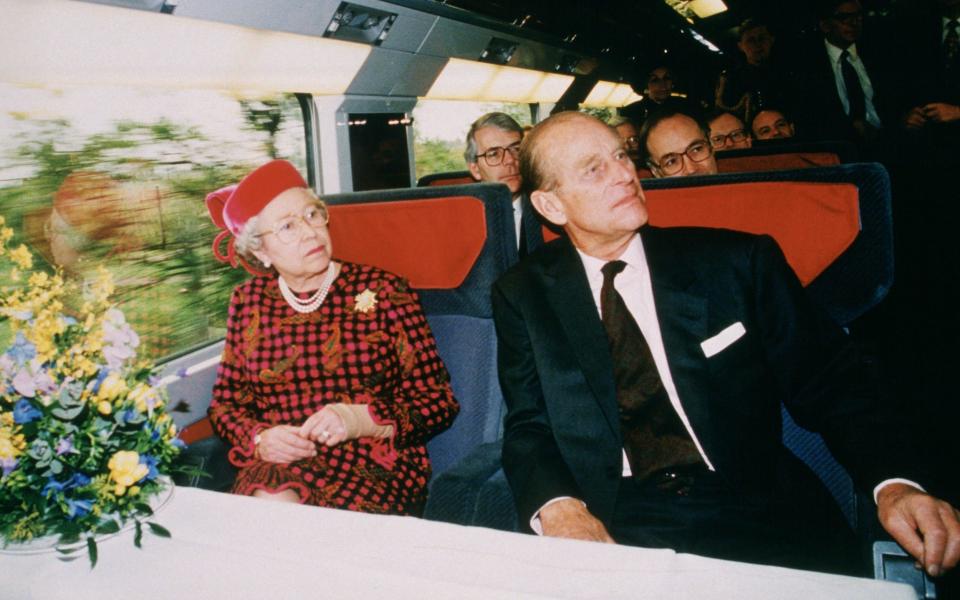

At one time there was even exaggerated excitement about a possible nocturnal service. The Nightstar sleeper train would allow passengers to board from Plymouth, Glasgow, London or Swansea and wake up in France or Belgium and perhaps beyond. Rolling stock was ordered and some rolling stock was built, but in 1997 – due to the increasing budget of budget airlines and delays in the opening of HS1 – the project was shelved and never resurfaced.
In response to that 1987 poster: yes, British travelers to the Continent can indeed get from point A to point B, but we still have to worry about C if we want to travel beyond the five European destinations. The high-speed rail network and sleeper start-ups have made this final stage easier than ever.
Challenges and competition
So, what awaits us as the Channel Tunnel turns 30? Both Eurostar and LeShuttle will face significant border and security revisions in the near future. The European Travel Information and Authorization System (ETIAS) – effectively the €7 (£6) visa exemption scheme – will become a burden from 2025, as will the EU’s Entry/Exit Scheme (EES; from late 2024). -EU citizens must provide biometric information (facial scan or fingerprints) before entering or leaving an EU country.
Exact dates and details are currently scarce, but Eurotunnel has previously predicted that the average processing time for a car in Folkestone will rise from less than a minute to up to seven minutes, and Ashford Borough Council in Kent is predicting possible 14-hour delays at the port of Dover. Eurostar and Eurotunnel are overhauling their departure terminals in preparation; the latter is spending €80 million (about £70 million) to expand its terminals in Folkestone and Coquelles.
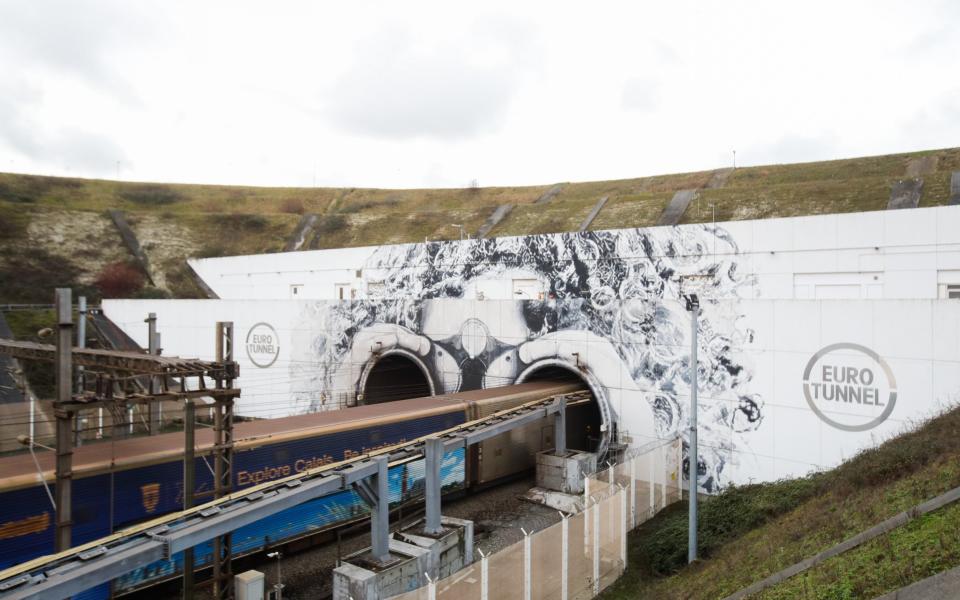

That aside, the biggest shake-up of the next decade will be the emergence of competition for Eurostar. Spanish start-up Evolyn hopes to offer connectivity from the UK to “several countries” before the end of the decade; Dutch railway company Heuro and even Sir Richard Branson also have their eyes on the line.
Many think this can only be a good thing: “Thirty years is a long, long time to operate without competition,” says Nick Trend. Telegram‘s chief culture and consumer editor.
A spokesman for LeShuttle’s parent company Getlink said: “If choosing to travel by train rather than flying or ferrying benefits the planet, then expanding high-speed rail travel between London and new destinations in mainland Europe can only be beneficial.” Let it be something positive.”
Despite all today’s challenges, the Channel Tunnel remains an engineering marvel of the modern age. It is currently the world’s longest undersea railway tunnel and has changed the way we think about traveling to Europe. No one condones seeing Paris or Brussels on the departure board at St Pancras International Airport or taking the shuttle for a weekend in Northern France. And others have been inspired: Just this week, new plans emerged for a tunnel between Spain and Morocco, building a tunnel between the Faroe Islands, and even some Scottish islands are mulling the idea of undersea connections.
There is no doubt that complex EU border changes will create new challenges, but as technologies advance and train stations adapt, these problems will not be final. If anything, the opposite is true. As the climate-conscious population moves away from flying, these twin lines under the Channel will become more vital than ever, and a wider network offering cheaper fares will help usher in the new era. There is still light at the end of the Channel Tunnel.